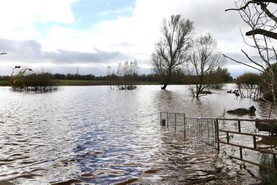Widely varying prices have been reported by those selling hay, as rain threatens to roll in across many fields, with bales left awaiting sale or the move indoors.
On the lower end of the scale, more medium-quality bales have been taken from the field at €25 per bale.
This price has also been paid for better-quality hay where farmers were happy to see bales surplus to their own requirements moved quickly from farms.
There are exceptions to these prices where silage yields have been high or where farmers have made a lot of hay themselves
High-quality leafy hay has been saved in many parts of the country due to the good weather of early July and is easily reaching €27 to €28 per bale in most areas.
Up to €30 is being paid for local delivery for rain-free, weed-free hay of this specification.
There are exceptions to these prices where silage yields have been high or where farmers have made a lot of hay themselves. In these situations, lower prices have been reported as the best quality hay may only hope to make €25 per bale collected.
Some farmers are delivering bales for this price out of fear of having bales getting wet with rain in the field, especially where the option to shed hay is not there.
High prices
On the contrary, huge prices have been paid in places where little hay was made.
Areas of Kerry, Clare and Galway have had prices of up €40 paid for 4X4 round bales, in cases where bales were drawn across county boundaries and to farms of very limited land type.
Very few loads have yet to travel from the midlands and east to the west, as most hay sold has been bought by small, local and repeat customers to date.
Small squares
Small square bales are trading for €3 per bale around the country, with demand just as variable as it has been for rounds.
In general, suckler, dairy and sheep farmers have not been ordering large volumes and bales are moving to farms in small loads
Sellers have said they will be looking for €3.50 to deliver bales to farms, rising to €4 a bale should hay be taken into sheds for a period before sale.
No major class of buyer has been reported for hay so far, other than dealers.
In general, suckler, dairy and sheep farmers have not been ordering large volumes and bales are moving to farms in small loads.
Northern demand
A large proportion of the interest coming from fodder dealers has been from north of the border, according to sellers.
It has also been reported that a significant proportion of older, traditional-type hay meadows have yet to be cut.
An anticipated heatwave has yet to materialise for the many farmers ready to mow, which appears to include much of the traditional meadow enrolled in GLAS.






 This is a subscriber-only article
This is a subscriber-only article











SHARING OPTIONS: